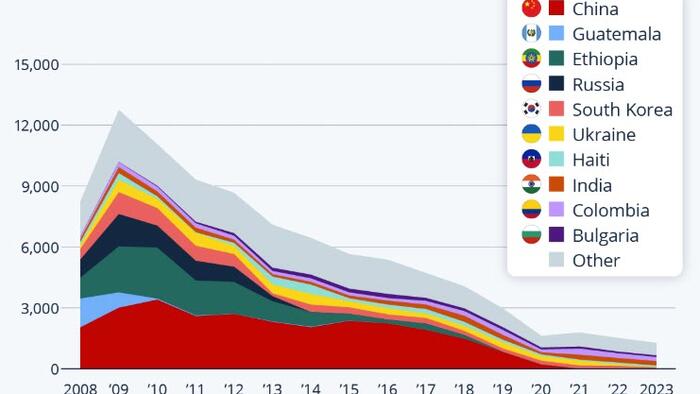The landscape of international adoption in the United States has undergone significant changes over recent years, with a notable decline in the number of children adopted from abroad. According to the U.S. Department of State data, the number of international adoptions dropped from more than 12,700 in 2009 to under 1,300 by 2023, illustrating a steep decline in cross-border adoptions. Various factors contribute to this downward trend, including legislative changes, international relations, and ethical considerations surrounding the adoption process.
One of the key developments influencing this shift was the implementation of the Hague Convention on the Protection of Children and Co-operation in Respect of Intercountry Adoption in 2008. This international agreement was designed to address issues of unethical practices in transnational adoptions, such as child trafficking or abduction. The Convention mandates that adoption agencies must be accredited at a federal level and requires that efforts be made to find placements for children in their countries of origin prior to considering international options. While these guidelines aim to ensure ethical practices, they have unintentionally led to extended waiting periods and increased costs, which disproportionately affect families looking to adopt from countries with fewer resources to comply with these standards.
Examining specific cases regarding intercountry adoption highlights the consequences of commercialized adoption practices gone awry, particularly in Guatemala. Previously considered a hub for international adoptions, Guatemala experienced widespread corruption and unethical activities, including the kidnapping of children for adoption. This alarming trend prompted the government to place a moratorium on new international adoptions in 2008, which effectively ceased adoptions until a Hague-compliant process could be established. Before this moratorium, Guatemala provided a significant number of international adoptees, ranking second globally only to China. The situation in Guatemala serves as an example of the potential pitfalls related to unregulated adoption practices.
China has historically been a leading country for the adoption of children in the U.S., with nearly 83,000 Chinese children adopted between 1999 and 2023. This figure surpasses adoptions from other notable countries, including Russia, Guatemala, and South Korea. However, China’s adoption policies have faced their own challenges, especially during the COVID-19 pandemic when all international adoptions were halted. Although adoption resumed in 2023, with 16 children placed in the U.S., the Chinese government recently announced that it would no longer facilitate intercountry adoptions except for blood relatives. This decision comes amidst concerns regarding its dwindling birth rate and aging population, contributing to projections that international adoptions from China could soon cease entirely.
The influence of international politics on adoption trends cannot be overstated, particularly in the case of Russia. Following the 2012 implementation of the U.S. Magnitsky Act—targeting Russian officials accused of human rights violations—the Russian government retaliated by banning adoptions by U.S. families. Consequently, adoptions from Russia, which numbered 1,588 in 2009, plummeted to zero by 2015 and remain nonexistent to this day. These political tensions have dictated which countries remain viable sources for international adoptions, directly impacting the number of children who can find homes in the United States.
In conclusion, the decline of international adoptions in the U.S. reflects a complex interplay of legislative, ethical, and geopolitical factors. The implementation of the Hague Convention has brought about more stringent requirements, often leading to longer wait times and elevated costs for prospective parents. Additionally, the histories of specific countries like Guatemala and China illustrate the consequences of both unethical adoption practices and changing government policies. Likewise, international relations, as demonstrated by Russia’s adoption ban, further complicate the dynamics of cross-border adoption. As these trends evolve, the future of international adoption remains uncertain, with the potential for further declines in the number of children finding homes in the U.S. from abroad.

